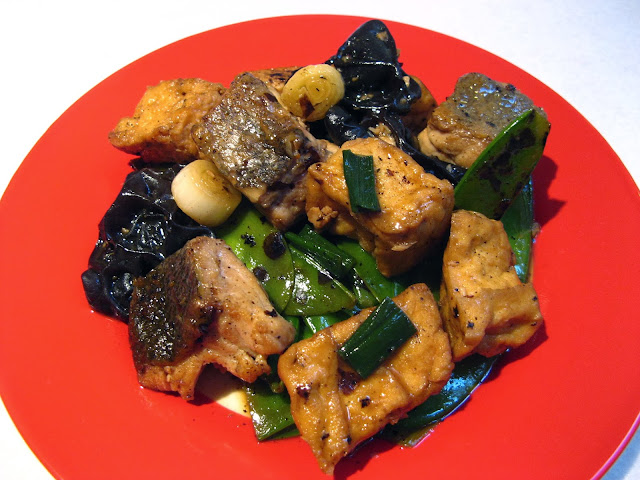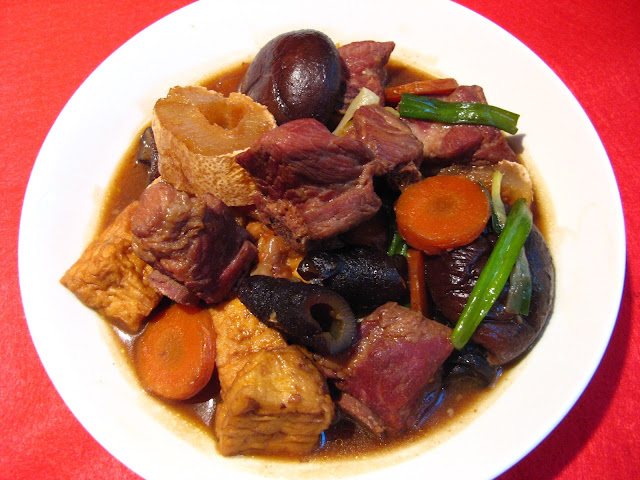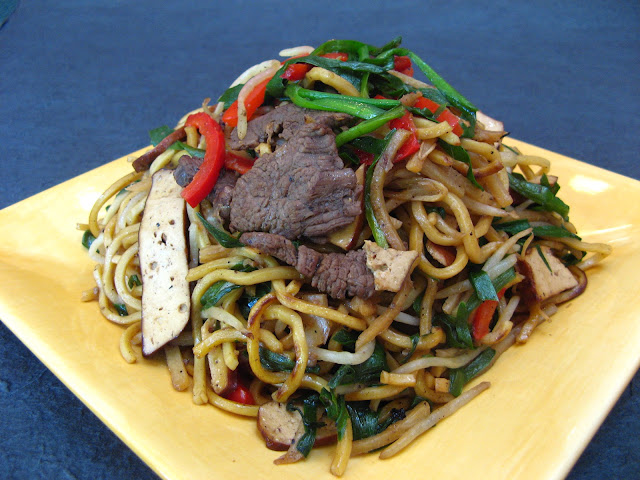This recipe was updated on 05 Aug 2015. Some instructions
and ingredient quantities were changed, and metric measurements added.
This dish is usually prepared in a clay pot, but since I
don’t have one, I adapted this dish to use stir frying. The clay pot version is
one of my favorites to order at a restaurant, so I was looking forward to
making a stir fried version at home. The dish contains some of my favorite
ingredients – roast pork (especially the crispy skin) and oysters.
Unless you’re a master at roasting whole pigs, you’ll probably
(like me) go to your local Asian delicatessen where you can buy just 1-2 pounds
of roast pork. Have the butcher cut the roast pork into pieces and you’ll also
get one small container of a soy based dipping sauce with your order. The
dipping sauce is slightly sweet, so it goes well with the roast pork. Any
leftover roast pork not used in the dish can be used for other dishes (assuming
you don’t eat the rest of the roast pork all by itself). I was lucky enough to
get the roast pork while it was still hot, right after roasting, at the
delicatessen. It was still so hot, that the butcher burned his fingers when he
cut the first roast pork piece from the pig for me!
Enjoy!












